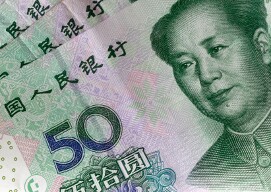
The Chinese yuan is looking to extend its modest winning streak this week, buoyed by better-than-expected manufacturing and non-manufacturing data. Global financial markets have been waiting for these figures to see how the worldâs second-largest economy is faring in the aftermath of the coronavirus pandemic. While the numbers are positive, they still suggest sluggishness in China.
According to the National Bureau of Statistics (NBS), the manufacturing purchasing managersâ index (PMI) climbed to 51.5 in September, up from 51.0 in August, which is the best performance since March. The market had penciled in a reading of 51.2. This is the seventh consecutive month of growth in factory activity. Beijing reported gains in output, new orders, export sales, and suppliersâ delivery time. Employment and selling prices softened. Business sentiment was flat.
The non-manufacturing PMI advanced to 55.9 in September, up from 55.2 in the previous month. New business and input costs increased, but new export orders and employment slumped. Business sentiment surged to a four-month.
The private-sector Caixin manufacturing PMI came in at 53.0, slightly worse than the median estimate of 53.1. New orders popped at the best rate in nearly a decade, while output and buying activity recovered. Business sentiment remained positive.
Wang Zhe, a senior economist at Caixin Insight Group, said in a statement:
The economic recovery has picked up its pace after the epidemic. In the near future, great uncertainties remain about the overseas pandemic and the US presidential election.
On Thursday, Caixin will release its services and composite PMI data.
In a new report, the World Bank forecast that China’s economic growth would be 2% this year, noting that the COVID-19 pandemic would keep Asia’s growth at its lowest since 1967.
These domestic difficulties were compounded by the pandemic-induced global recession, which hit [East Asia and Pacific] economies that rely on trade and tourism hard.
Countries with well-functioning social protection programmes, and good implementation infrastructure, pre-Covid, have been able to scale up more quickly during the pandemic.
Beijing recently unveiled its new five-year plan that puts forward a gross domestic product (GDP) target rate of between 5% and 6%. However, Beijing authorities are being a bit more aggressive in its projections as it is aiming for an annual growth rate of 6.5%.
The USD/CNY currency pair fell 0.12% to 6.8084, from an opening of 6.8165, at 13:25 GMT on Wednesday. The EUR/CNY tumbled 0.43% to 7.9703, from an opening of 8.0056.
If you have any questions, comments, or opinions regarding the Chinese Yuan, feel free to post them using the commentary form below.